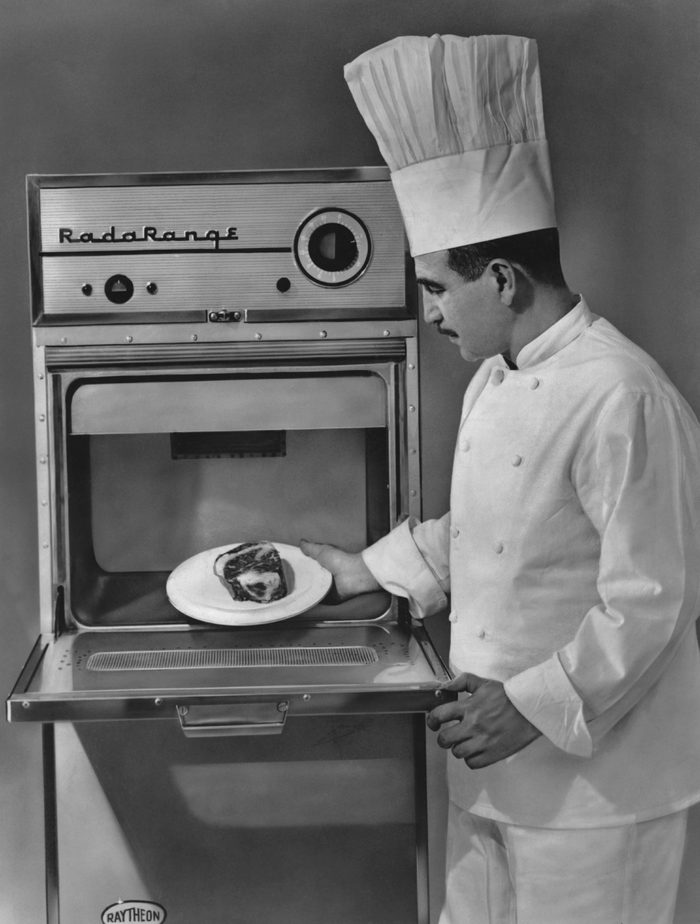
A melted candy bar helps create the microwave oven
Percy Spencer was so fascinated by the sinking of the Titanic that he became a scientist. He joined the Navy, trained as a radio electrician, and ultimately became a civilian expert on radar during World War II, earning the Distinguished Public Service Award for his work. And he did it all without ever having graduated from high school.
After the war, Spencer worked for Raytheon Manufacturing, a defense contractor. As he was walking near the radar equipment one day, he absentmindedly stuck his hand in his shirt pocket—and found a gooey mess. Spencer often carried a Mr. Peanut candy bar to feed the squirrels at lunch. He knew enough about radar to suspect that its heat-producing magnetron waves could be the culprit, but he wasn’t sure. So he placed a bag of popcorn kernels in front of the machine—and they popped. Then came a raw egg, which dutifully exploded all over a skeptical colleague’s face.
Spencer fine-tuned his discovery with Raytheon and marketed it to airlines, railways, restaurants, and cruise liners as “the Radarange”—or, as it’s known now, the microwave oven. Fortunately, microwaves have come a long way since 1947, when they stood nearly six feet tall, weighed 750 pounds, and cost $3,000. That’s roughly $35,000 today. These split-second decisions also changed history.
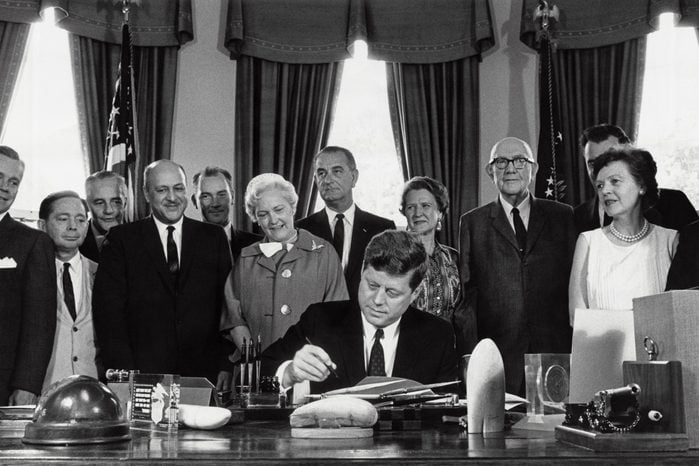
A coconut saves JFK’s life
August 2, 1943, began as a cloudy, moonless night in the South Pacific for 26-year-old Navy lieutenant John F. Kennedy. As Kennedy and his crew patrolled the Solomon Islands from their boat, PT-109, a Japanese destroyer pierced through the fog and sliced the smaller ship in half. An enormous fireball filled the sky, and two men aboard PT-109 were killed. As Kennedy and ten other survivors huddled around the wreck, they realized they had no choice but to swim to a nearby island. Kennedy, a former member of the Harvard swim team, personally towed one of his wounded comrades with his teeth for five hours through shark- and crocodile-infested waters to Plum Pudding Island, where they ate coconuts to survive.
After several days, the men flagged down two Solomon Islands natives passing in a canoe, who agreed to take a message to the Allied forces. The dispatch was carved into a coconut shell: “NAURO ISL … COMMANDER … NATIVE KNOWS POS’IT … HE CAN PILOT … 11 ALIVE … NEED SMALL BOAT … KENNEDY.” The islanders delivered the coconut, and the men were soon rescued.
Years later, Judge Ernest W. Gibson Jr., a colonel in the South Pacific during the war, surprised the newly elected President Kennedy with a gift. It was the coconut he had carved his message into. Kennedy had it encased in plastic and used it as a paperweight throughout his presidency. Today, it is on permanent display at the John F. Kennedy Library in Boston. These ordinary people changed the course of history.
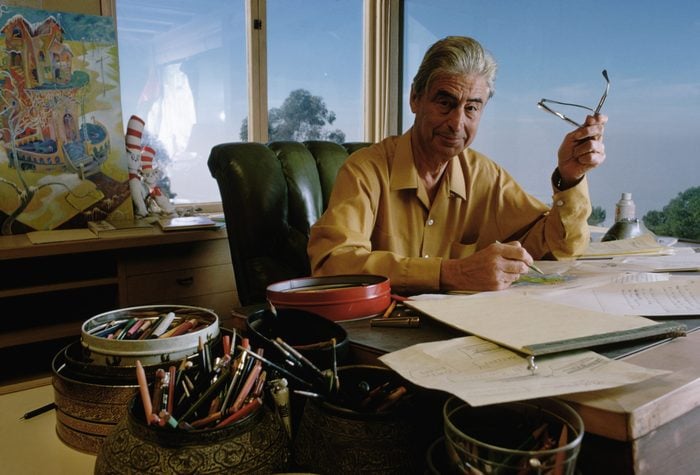
Dr. Seuss and Stephen King are rescued from the trash can of history
Different though they may be, Stephen King and Dr. Seuss have two things in common. They are both among the most successful authors in American history, and they both narrowly escaped a life of obscurity.
Theodor Geisel—the good doctor’s given name—wrote his first children’s book, A Story No One Can Beat, in the mid-1930s. Working as an advertising illustrator at the time, Geisel sent his whimsical manuscript to 27 publishers. They all rejected it. After the last cold shoulder, Geisel stomped down New York City’s Madison Avenue, determined to burn the manuscript and, perhaps, his writing career.
While he was out cooling off, he bumped into his old college roommate, Mike McClintock, who happened to edit children’s books at Vanguard Press. Geisel shared his woes with McClintock, who asked to see the story. McClintock suggested a few changes, and Vanguard published the book in 1937 with a new title: And to Think That I Saw It on Mulberry Street. According to Geisel: “If I had been walking down the other side of Madison Avenue, I’d be in the dry-cleaning business today.”
Stephen King’s first published book was about a bullied teenage girl who discovers that she has fantastic mental powers, which she uses to get revenge on her tormentors. King’s worst critic wasn’t the publishers—it was himself. He disliked his story so much that he threw it away after writing only three pages, according to his memoir On Writing. A few hours later, his wife found the pages crumpled and covered with cigarette ash in the wastepaper basket. She took them out and started reading, and she was hooked. “She wanted me to go on,” King later wrote. “She wanted to know the rest of the story.” And so he went on. Carrie sold over a million paperback copies in its first year. Some things are not happy accidents. These petty conflicts changed history.
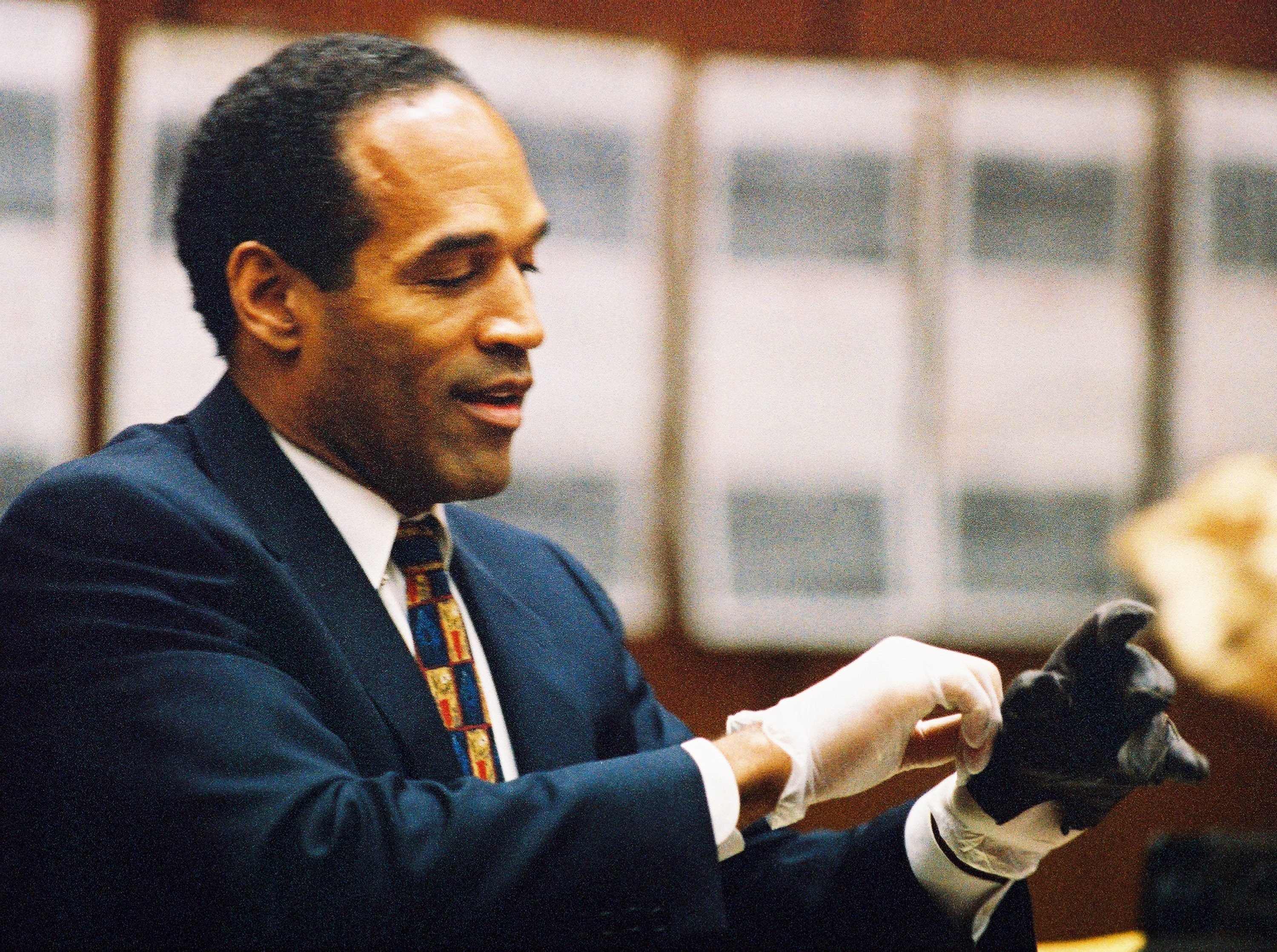
A DA’s slip about a glove flips the trial of the century
It was bound to be a case for the ages even before the suspect parked his white Ford Bronco on that hot Los Angeles night in 1994. OJ Simpson—football legend, rental car spokesperson, Naked Gun costar—was accused of killing his wife, Nicole Brown Simpson, and a local waiter, Ron Goldman, on the steps of Nicole’s posh home in Brentwood, California. The evidence against OJ would appear to be damning, including blood in the Bronco and on a glove that matched one found near Goldman’s body. “DNA evidence” became a household term with the OJ Simpson trial, and it was not his friend. Neither was a man named Kato Kaelin, who was living in OJ’s guesthouse and testified that he could not account for OJ’s whereabouts at the time of the murders.
OJ Simpson’s team had plenty of its own angles to work. The trial unfolded just a few years after the Los Angeles riots, and the racial polarization of the city was palpable. In fact, the defense team took pains to label one of the LAPD officers investigating the case, Mark Fuhrman, as having a history of making racial statements.
Still, many observers believed OJ would be convicted. And then the prosecutor asked him to try on the bloody glove found at the crime scene. The image of OJ Simpson attempting to squeeze his meaty hand into the snug leather fingers became a defining moment in the trial, as did the way defense attorney Johnnie Cochran described it in his now-historic closing statement: “If it doesn’t fit, you must acquit.” And the jury did. These inventions have changed the world in the last decade.
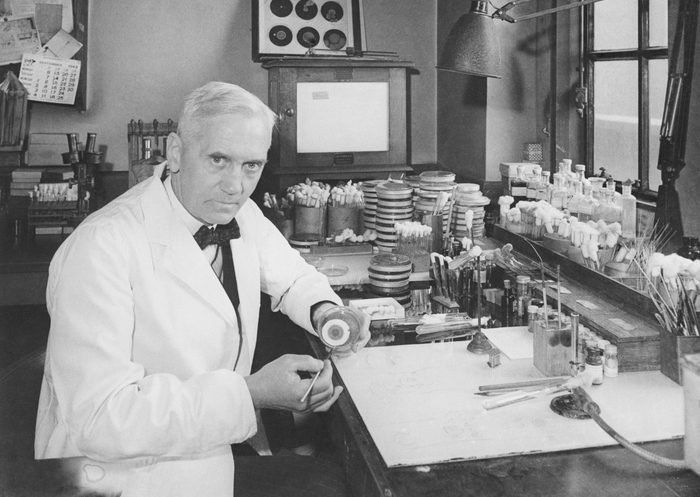
A messy science lab harbors a miracle drug
In the summer of 1928, Scottish physician Alexander Fleming was in such a rush to go on vacation that he accidentally left a stack of dirty Petri dishes in his laboratory sink. As if this weren’t already gross, the dishes were smeared with staphylococcus, a bacterium that causes boils, sore throats, and food poisoning. (Let’s hope the doctor at least washed his hands before he left.)
When Dr. Fleming returned weeks later, he found something interesting in the mess in his sink: One of the Petri dishes was dotted with bacteria everywhere except for where some mold was growing. The area around it was clear, as if protected by an unseen barrier. Upon closer inspection, Dr. Fleming realized that the mold, a rare form of Penicillium notatum, had secreted a “mold juice” that killed several strands of deadly bacteria. Dr. Fleming published his remarkable discovery—and almost no one noticed.
In fact, years later, Howard Walter Florey, an Australian pathologist, found Fleming’s paper by accident while leafing through old medical journals. Along with biochemist Ernst Boris Chain, Dr. Florey began to explore the therapeutic effects of the mold juice, and by 1941 they had collected enough penicillin to use on the first human subject, a 43-year-old police officer suffering from a terminal bacterial infection he’d contracted after scratching himself on rosebushes in his garden. The results were astounding: The patient’s fever dropped and his appetite returned, and the penicillin used to treat him was hailed as a wonder drug. Unfortunately, when supplies ran out, the officer’s infection returned and he died.
Still, Dr. Fleming shared the Nobel Prize with Dr. Florey and Chain for their work on the magic med. “I certainly didn’t plan to revolutionize all medicine by discovering the world’s first antibiotic,” he remarked, “but I suppose that was exactly what I did.” Check out the moments that changed women’s history forever.
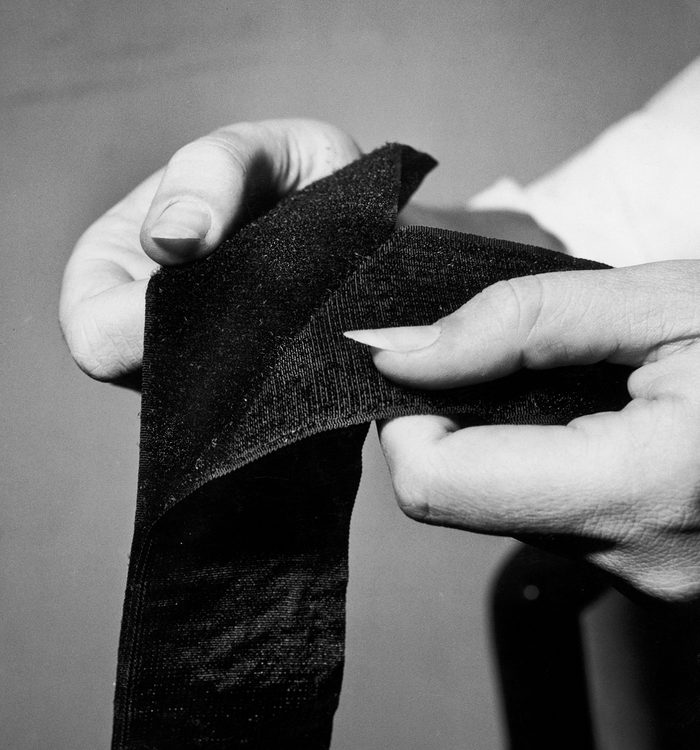
A dog gives the world Velcro
Swiss engineer George de Mestral was a natural inventor. When he was 12, he designed and patented a toy airplane. As he got older, he considered nature the greatest inventor on the planet, so he kept his eyes out for naturally occurring phenomena science could imitate. That’s where his faithful Irish pointer came in.
After a day hiking in the Swiss mountains, de Mestral noticed that his dog was covered with spiky burs, as were his own pants. He put the burs under the microscope and found tiny “hooks” at the ends of their bristles that seemingly latched onto almost any kind of fur or clothing. Since de Mestral was no fan of zippers—they tended to freeze in the Alpine winter—he spent the next ten years trying to duplicate the burs’ irresistible attraction to his hiking partner.
After countless attempts and belly rubs, de Mestral found the right material for his invention: nylon, which was strong enough for the hooks to hold but pliable enough to be separated with the right tug. De Mestral submitted his patent in 1952, and it was approved three years later. He named his invention Velcro, a combination of velvet and crochet, the French word for “hook.”
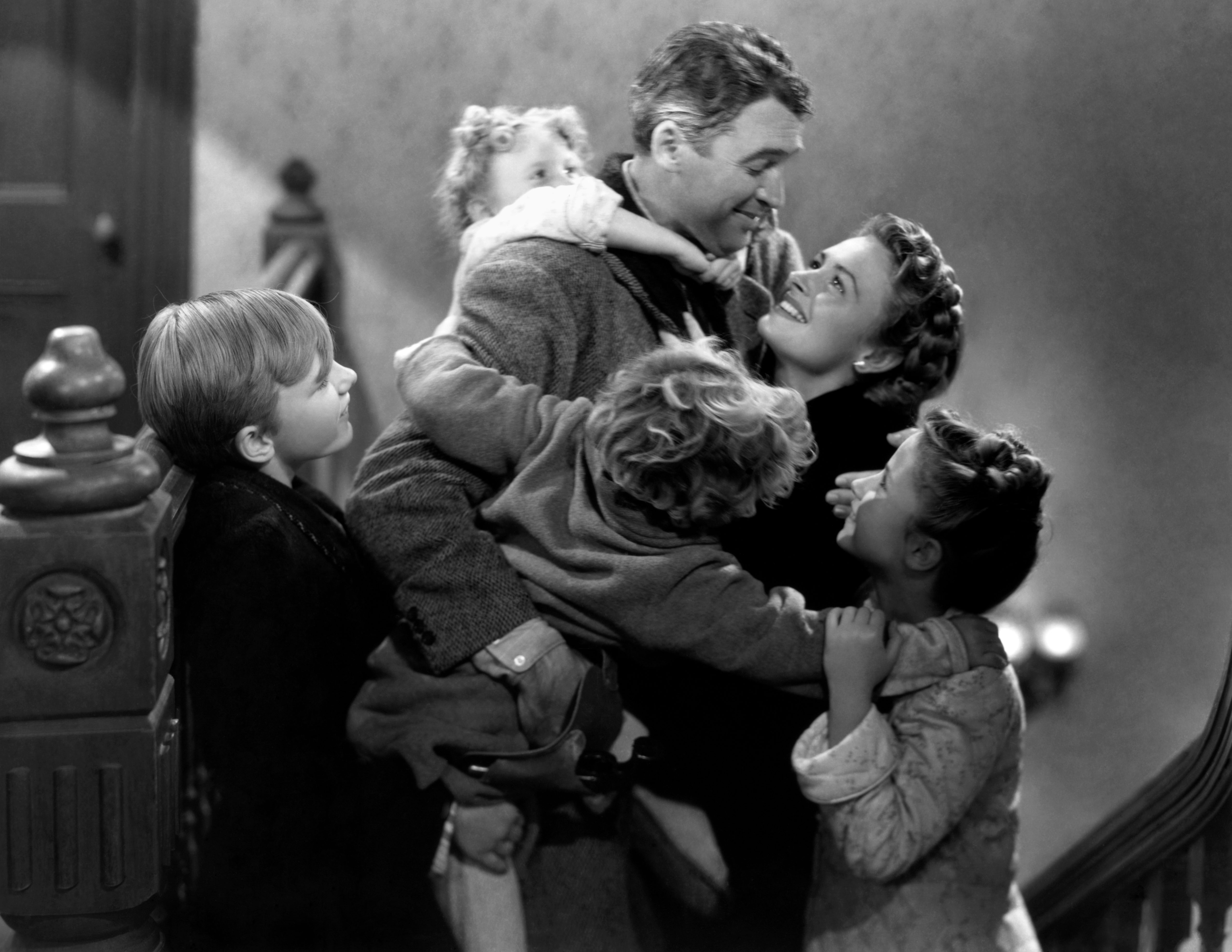
A clerical oversight makes It’s a Wonderful Life a classic
Despite its reputation as one of the most cherished works in American cinema, Frank Capra’s 1946 film was a financial disaster. It failed to earn back its $2.3 million budget at the box office, and its losses helped drive its production company, Liberty Films, out of business. Capra later said that Liberty’s financial woes proved “fatal to my professional career.”
And yet today It’s a Wonderful Life is a classic. How is that possible? Carelessness. After Liberty Films went broke, no one involved thought to monitor the movie’s copyright, which lapsed in 1974. That meant television stations were free to broadcast it without paying any royalties. And for many years, they took that no-lose deal. It wasn’t until a 1990 Supreme Court ruling on the ownership of Rear Window, another Jimmy Stewart movie, that the rights were effectively locked up again. But by then, Americans couldn’t face Christmas without George Bailey, Clarence, and the town of Bedford Falls.
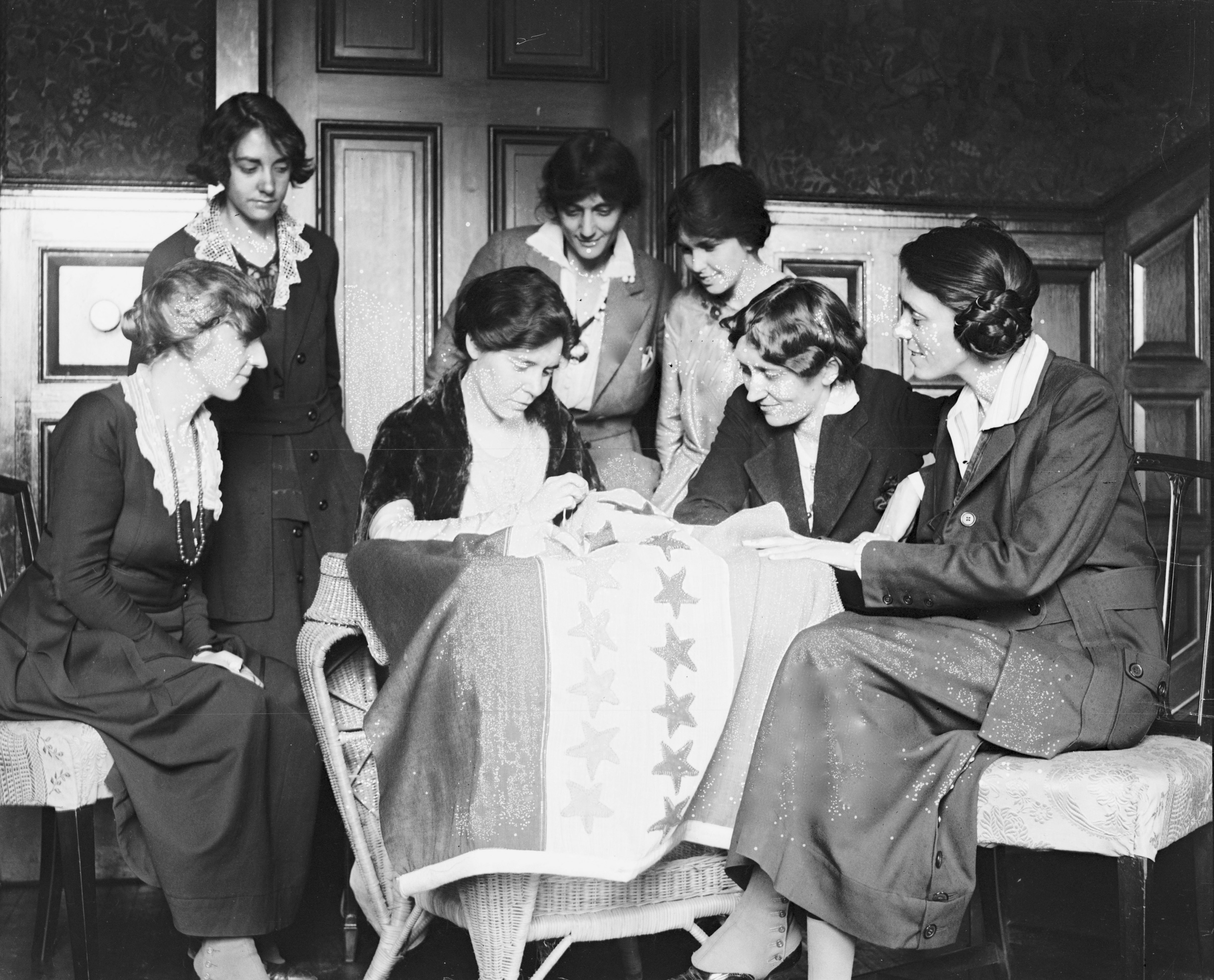
A note from Mom secures women’s right to vote
The road to women’s suffrage in the United States was long and difficult. After the passage of the 19th Amendment in 1919, the measure needed to be ratified by 36 states to become law. By the summer of 1920, the amendment’s advocates were one state from victory. Unfortunately, almost all the southern states opposed the amendment, and Tennessee was poised to join them because of a 48–48 tie in its state legislature.
A 24-year-old man named Harry Burn, the youngest representative in the state, was expected to be among those to vote “nay”—he was even wearing a red rose in his lapel, the symbol of the antisuffragists. However, on the morning of the Tennessee roll call, Burn received a letter from his mother, Phoebe “Miss Febb” Burn. She implored him to “be a good boy” and support the measure. When Burn’s name was called, he voted “aye” in a voice that was barely audible and yet shocking. He later declared, “I believe we had a moral and legal right to ratify” the amendment. He quickly fessed up to his mother’s influence on his vote. “I know that a mother’s advice is always safest for her boy to follow,” he said, “and my mother wanted me to vote for ratification.” These are the biggest lies that made history.
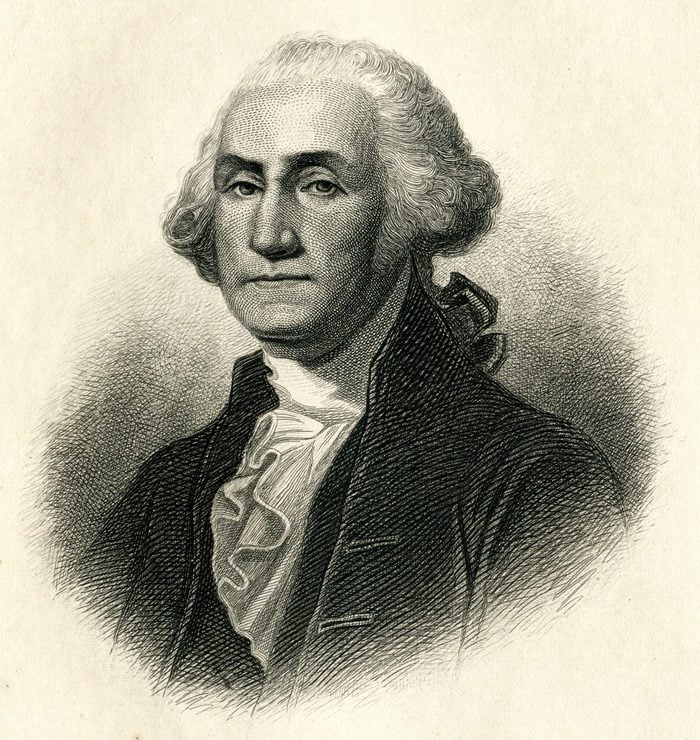
Fog rescues George Washington and a revolution
Despite the fireworks and celebrations every July 4th, the year 1776 was a dark one for the American Revolution. On August 29, the British had driven George Washington’s Continental Army all the way to the western edge of Long Island. His forces were trapped by English soldiers on Brooklyn Heights while English warships patrolled New York’s East River to his back.
To all observers, the American Revolution appeared to be hours away from ending with the capture of General Washington and his helpless army.
But then a heavy rain hit the region, forcing English general William Howe to pause his attack. In a moment that historian David McCullough later dubbed “the Revolution’s Dunkirk,” this brief lapse gave Washington the precious time he needed to free his men from the noose around them. He started slipping soldiers across the East River under cover of the night and into the morning, when a heavy fog miraculously descended and continued to conceal his army’s movements from the British.
By the time the fog lifted, the British were flummoxed. George Washington’s entire army had retreated onto Manhattan, along with all their supplies. General Washington was reportedly the last soldier to leave Long Island. Although a tactical defeat, Washington’s retreat is considered one of the narrowest escapes in the history of the U.S. military.
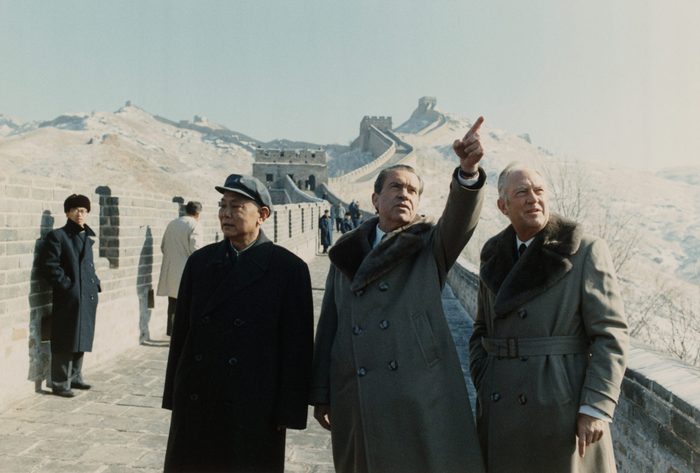
Ping-Pong ball dents China’s Great Wall
Glenn Cowan was practicing for the 1971 World Table Tennis Championships in Nagoya, Japan, one afternoon when he realized he was the only American in the room. He had missed the team bus back to the hotel! Undaunted, the 19-year-old Californian just hopped onto the shuttle with the Chinese national team. Most of the Chinese athletes watched the shaggy-haired American with suspicion—the United States had broken diplomatic relations with China way back in 1949, and the team had been forbidden to so much as speak to the Americans.
But Zhuang Zedong, the team’s star player, stepped forward to shake Cowan’s hand. The two spoke through an interpreter, and Zhuang presented the American with a silk-screen picture of China’s Huangshan mountain range. Cowan, a self-described hippie, returned the gesture the next day by giving Zhuang a T-shirt featuring a peace symbol and the words “Let It Be.”
After that spontaneous exchange of goodwill was beamed around the world, Chinese leader Mao Zedong invited the entire U.S. team to visit. A year later, President Richard Nixon made his own historic trip to Beijing. Now learn about these accidental discoveries that changed the world.